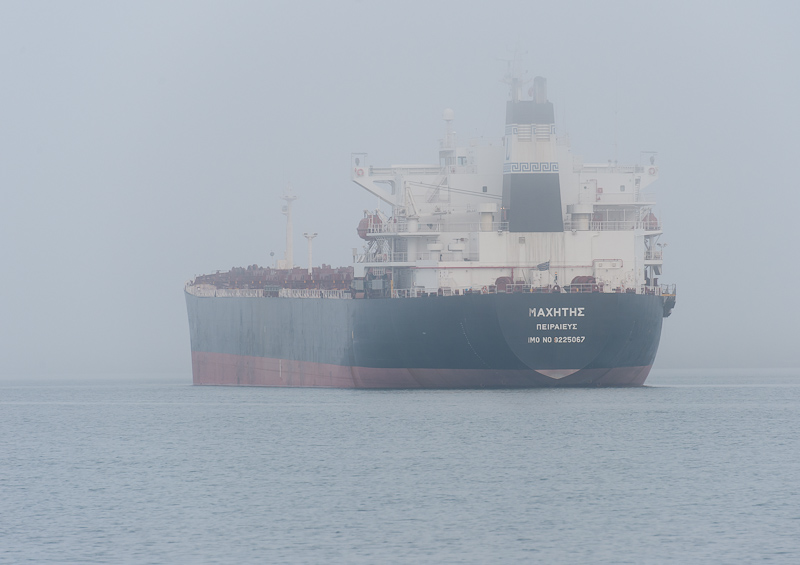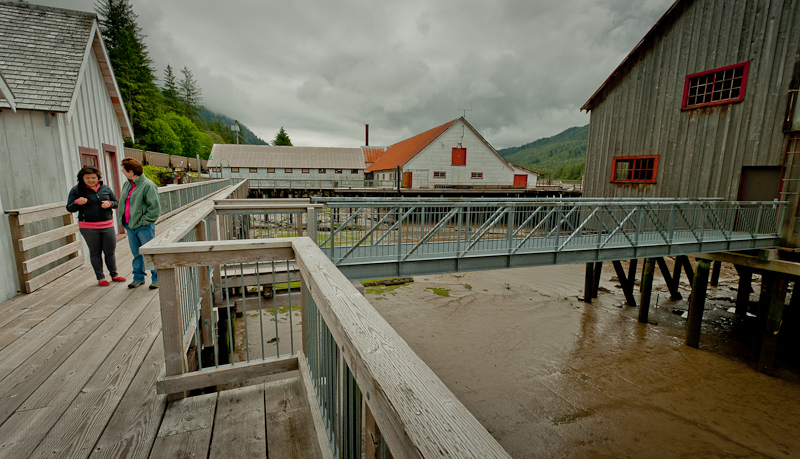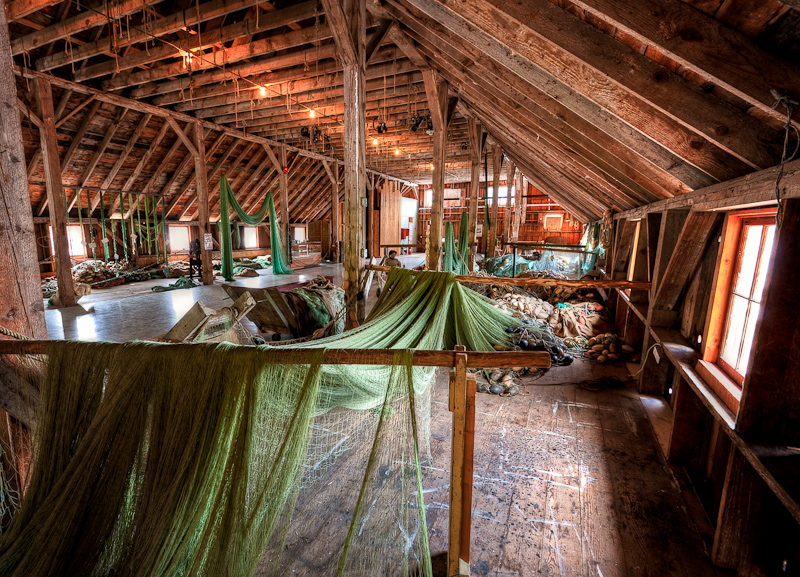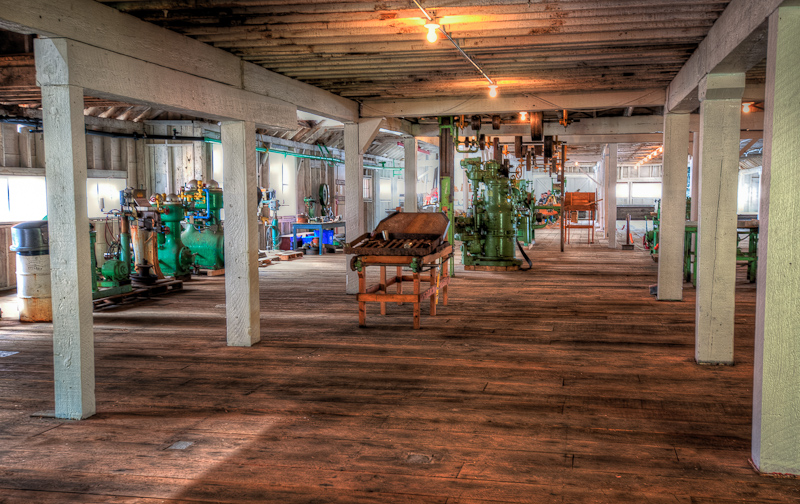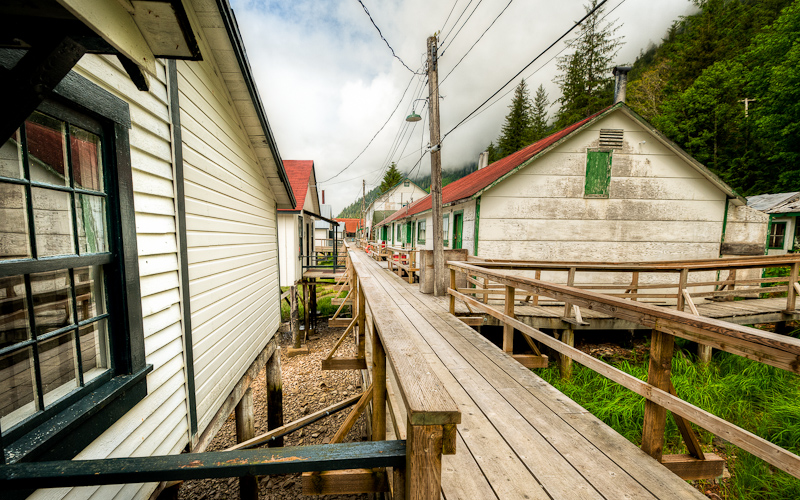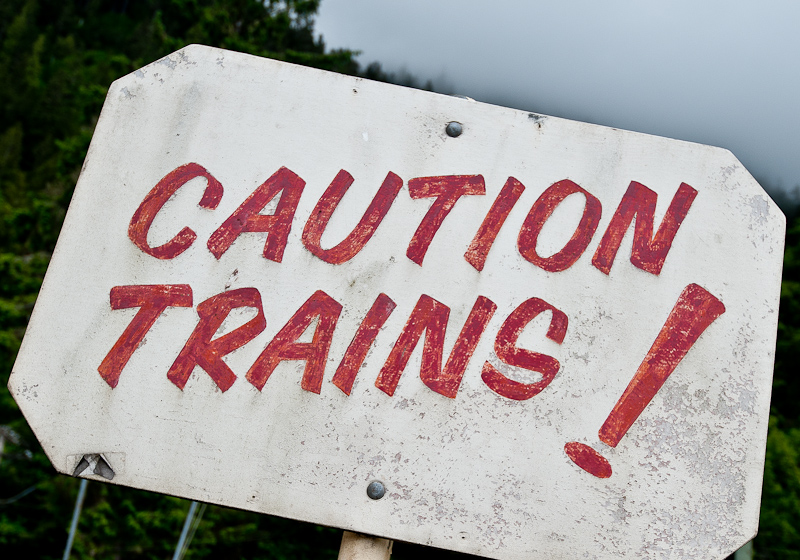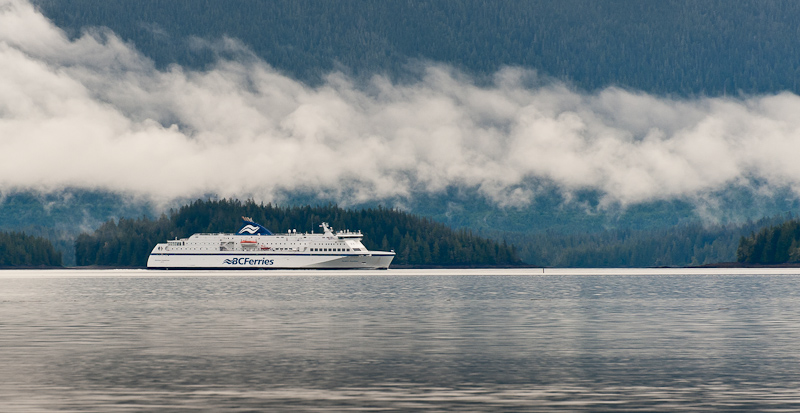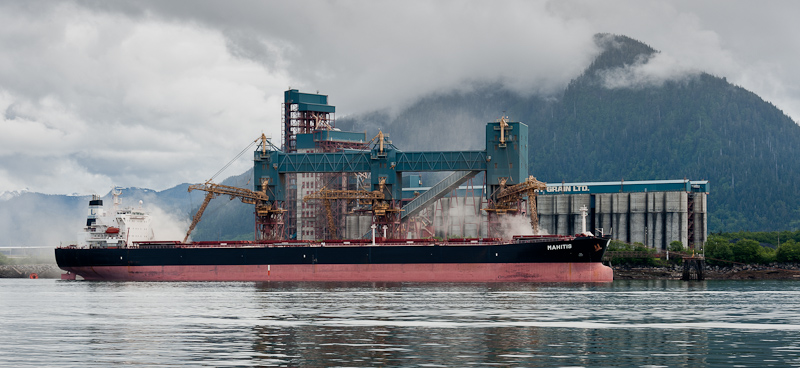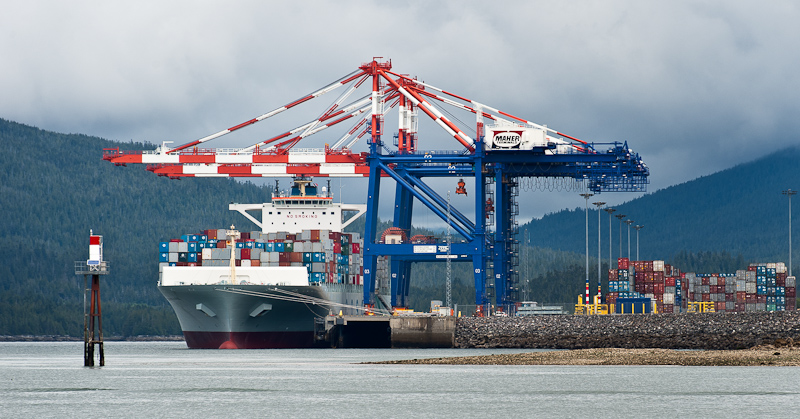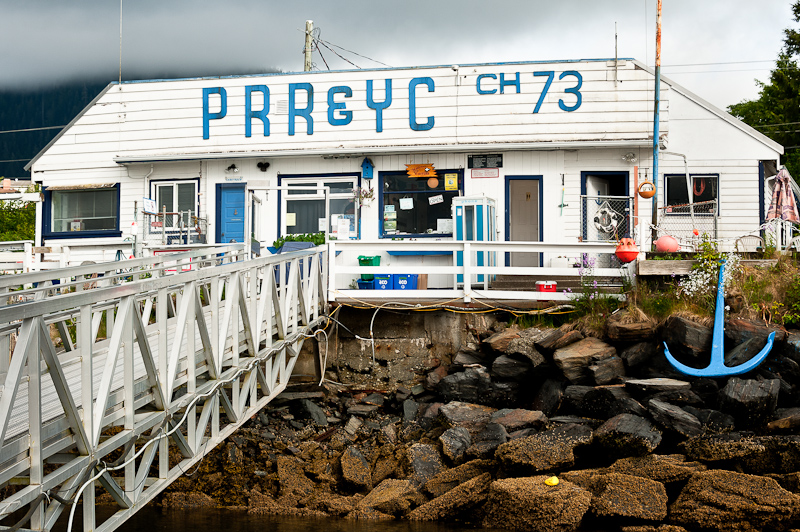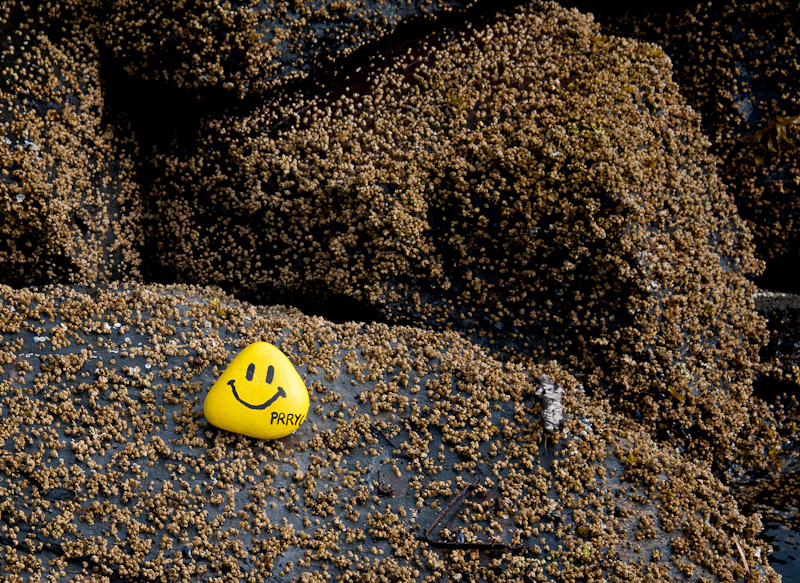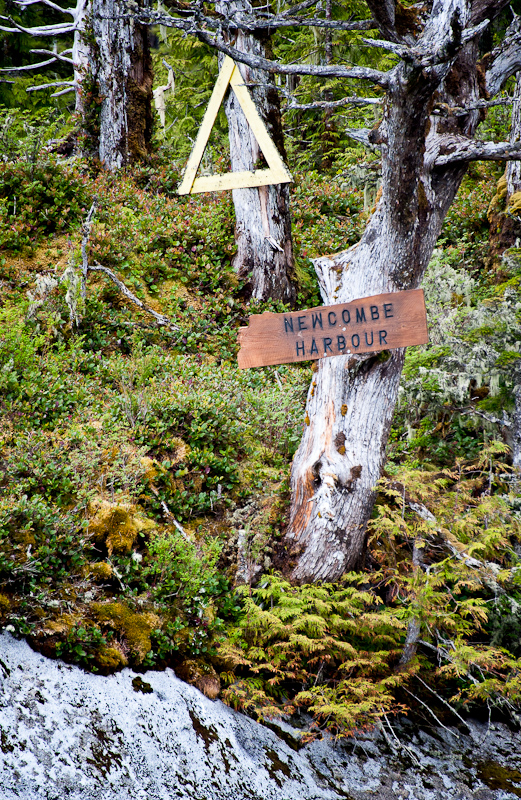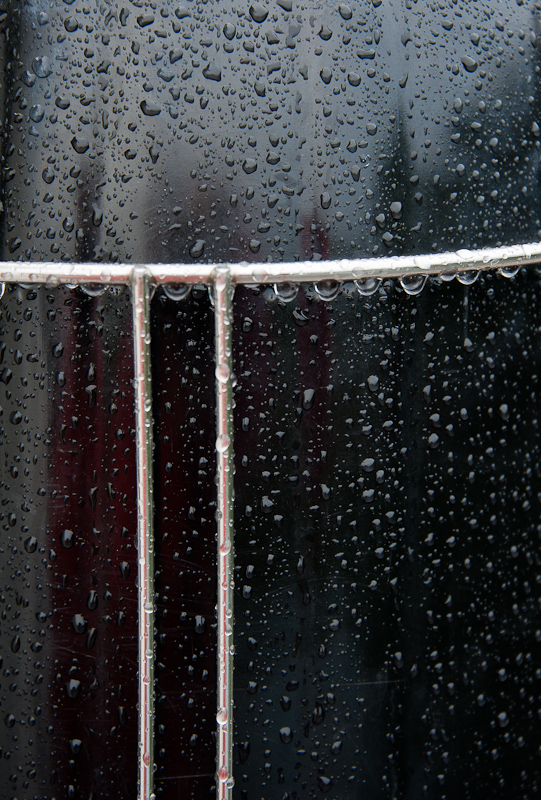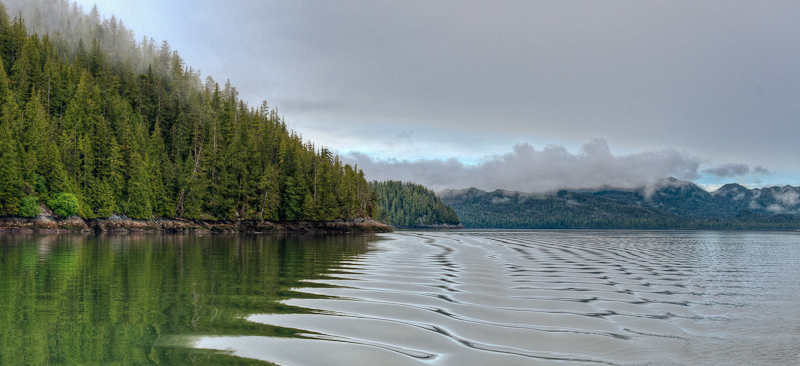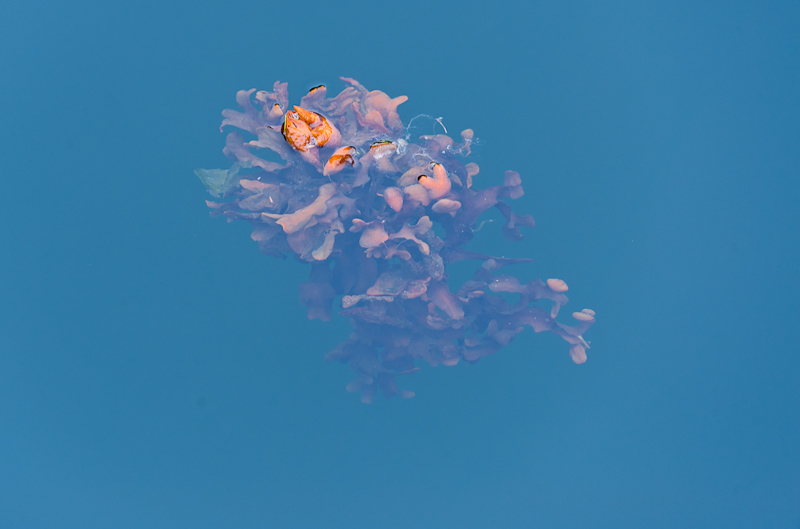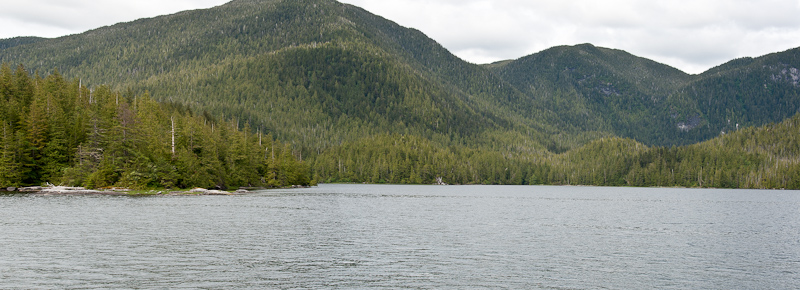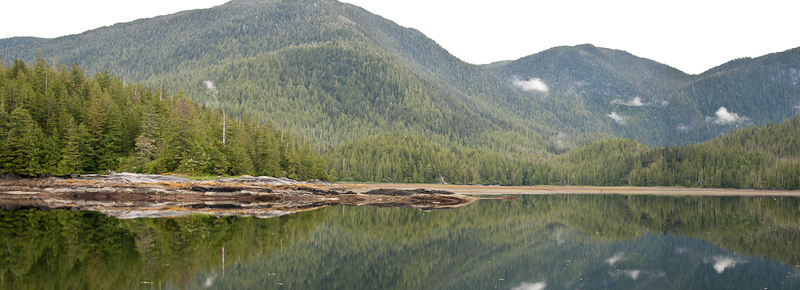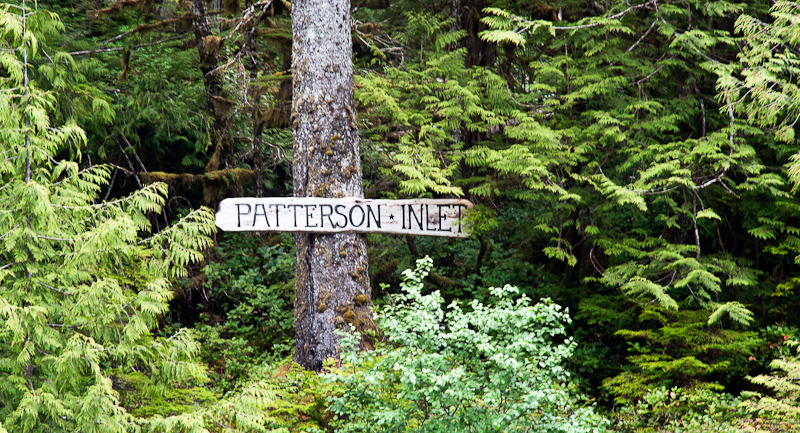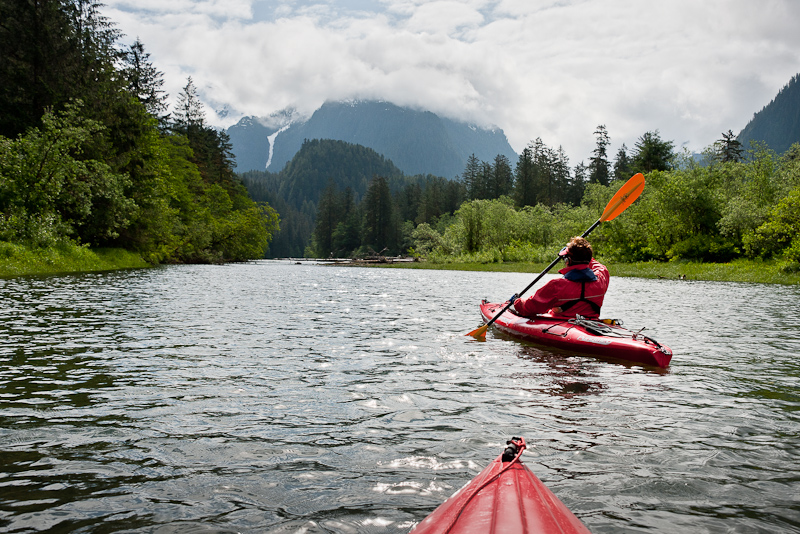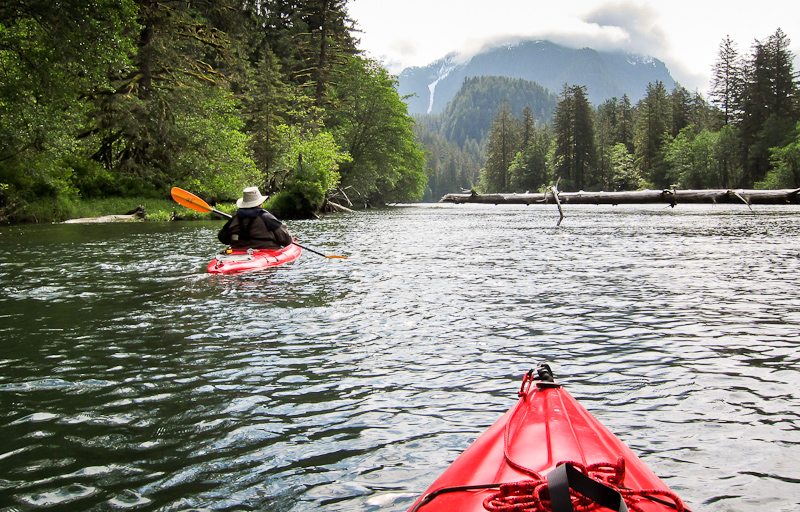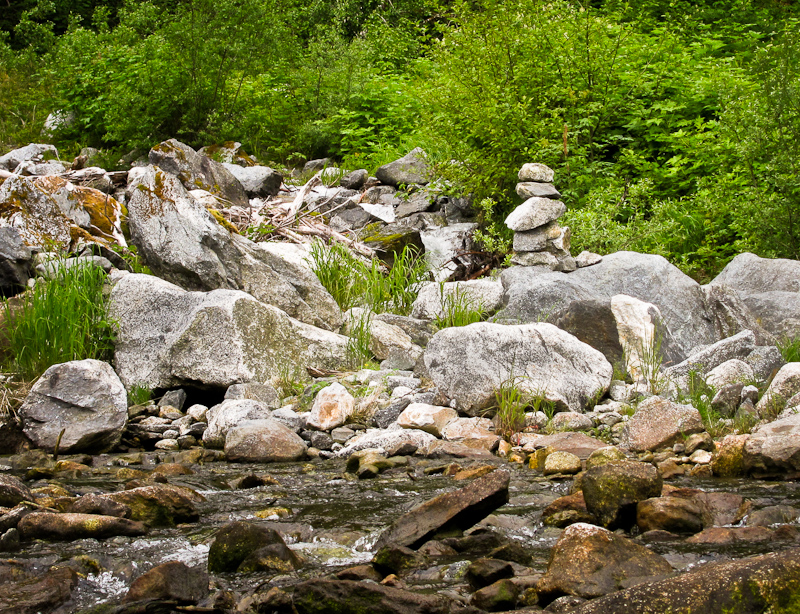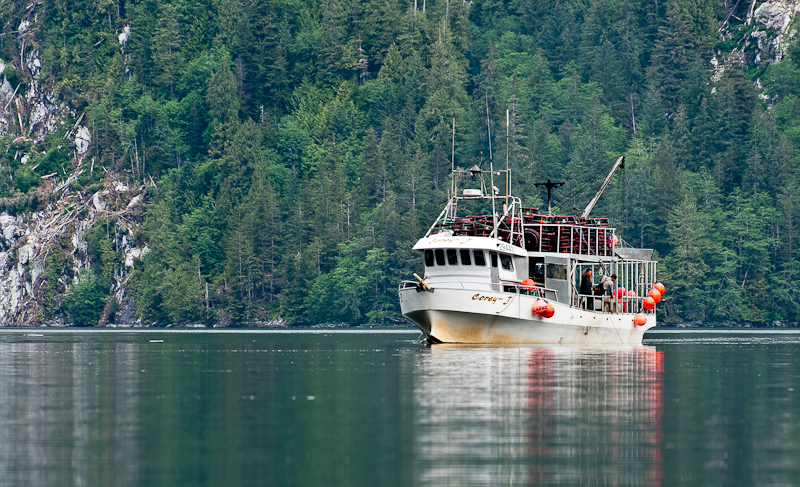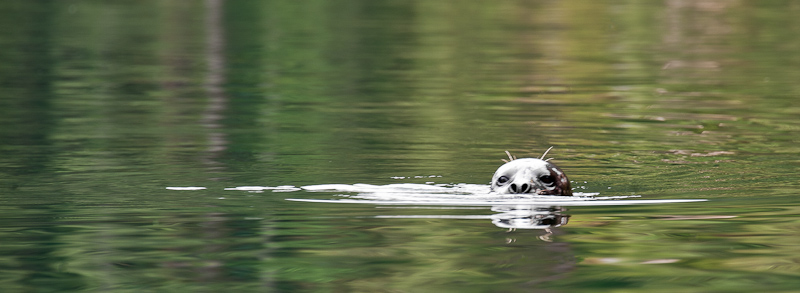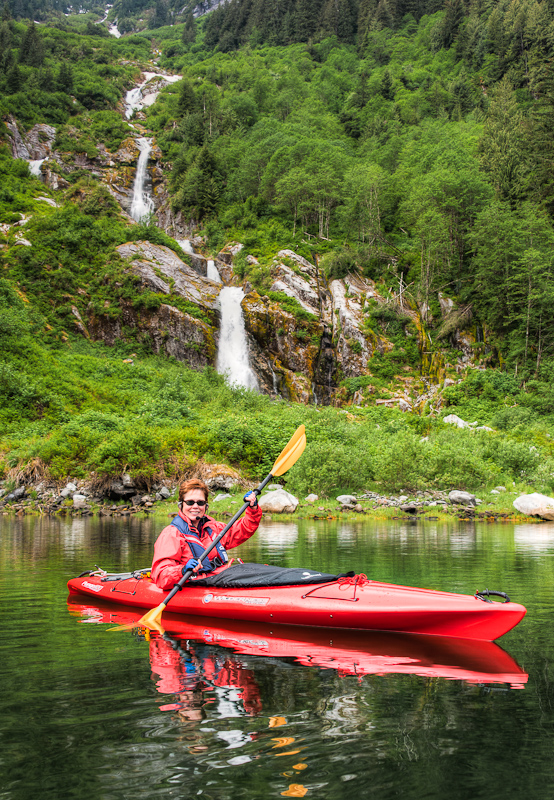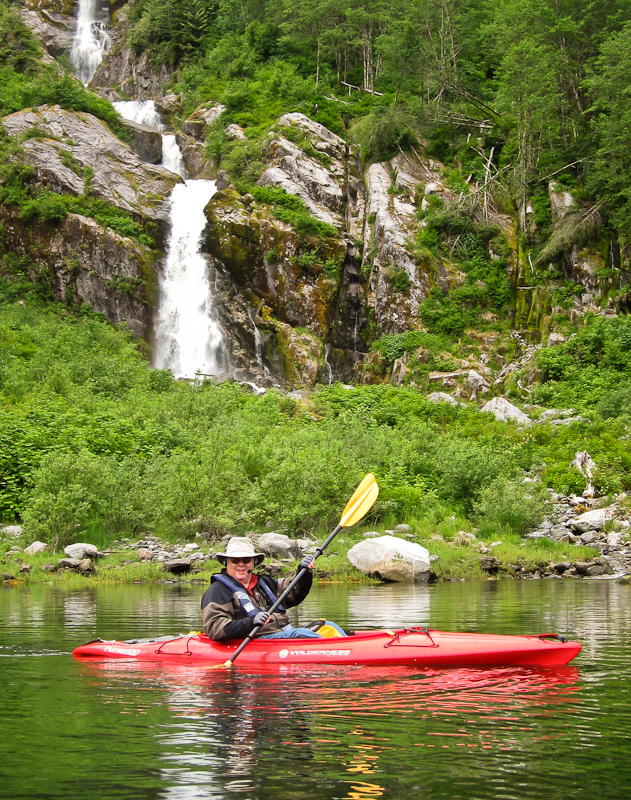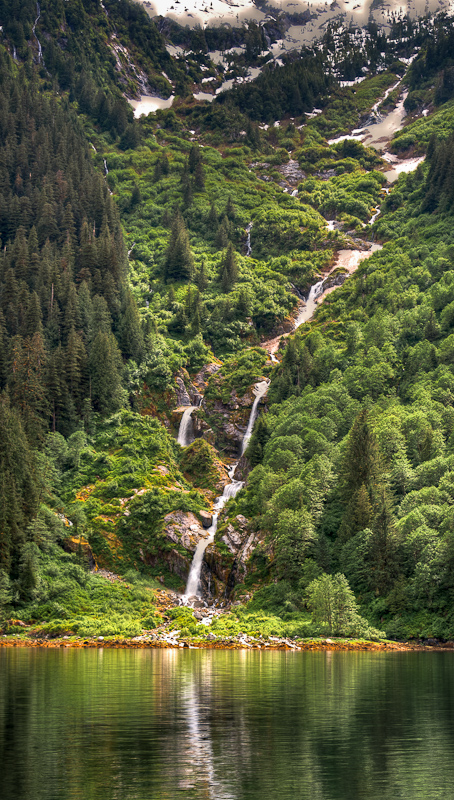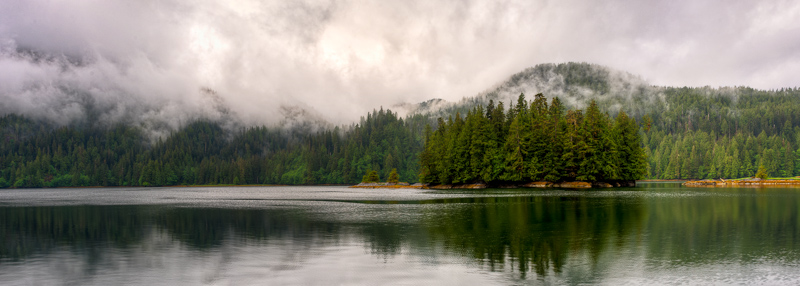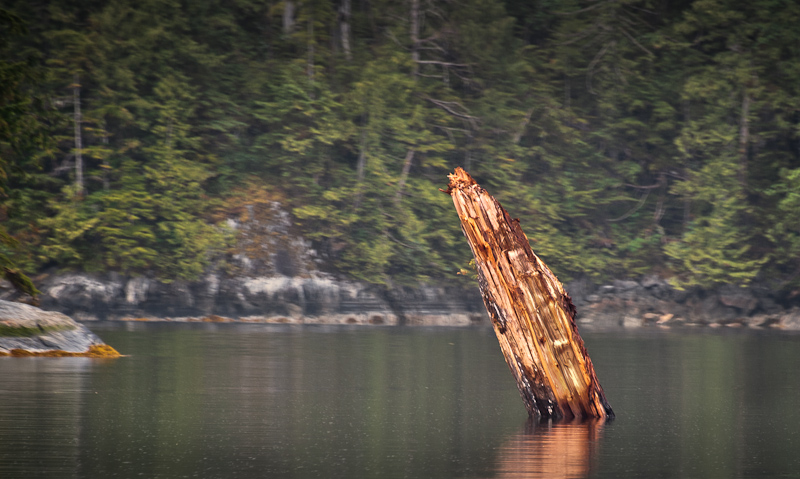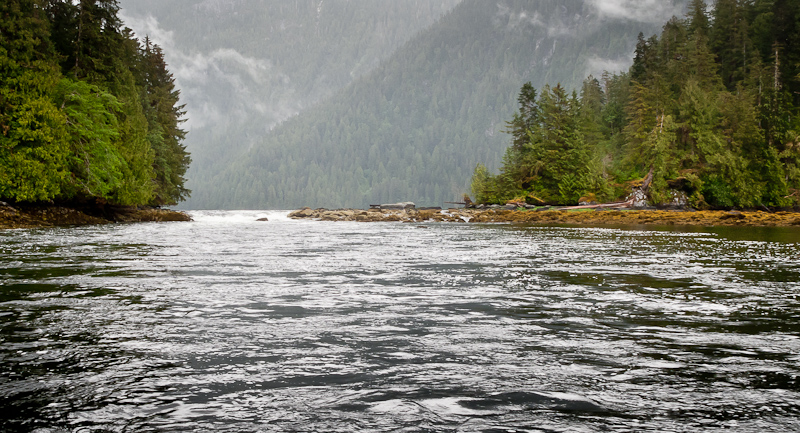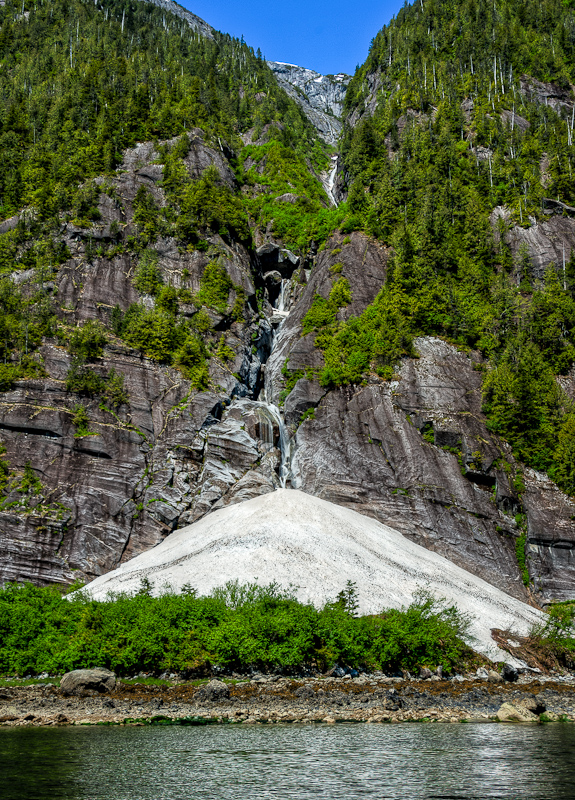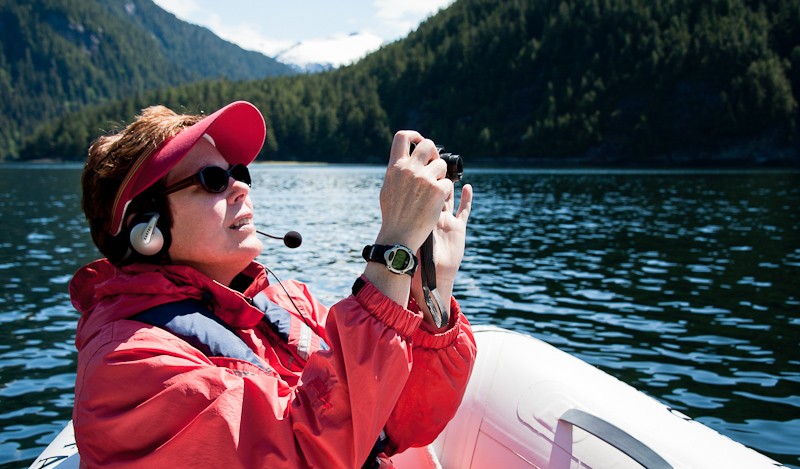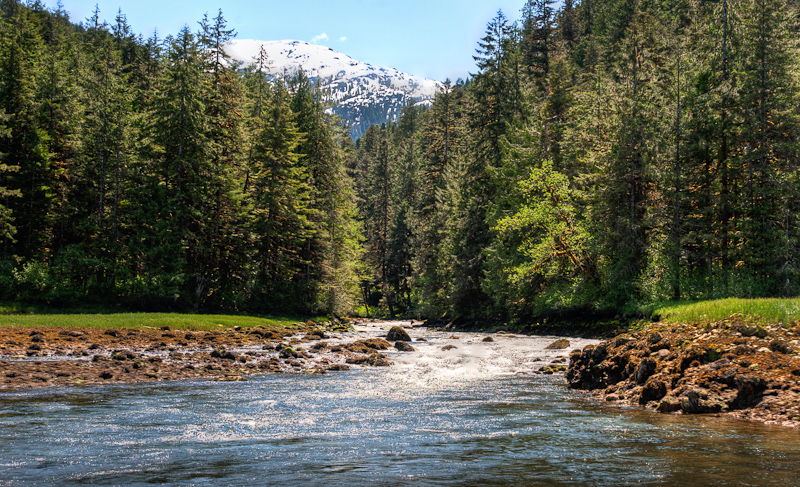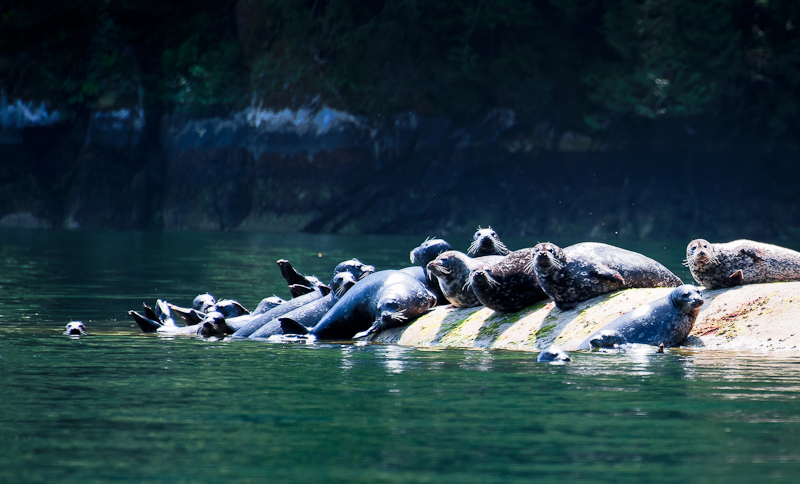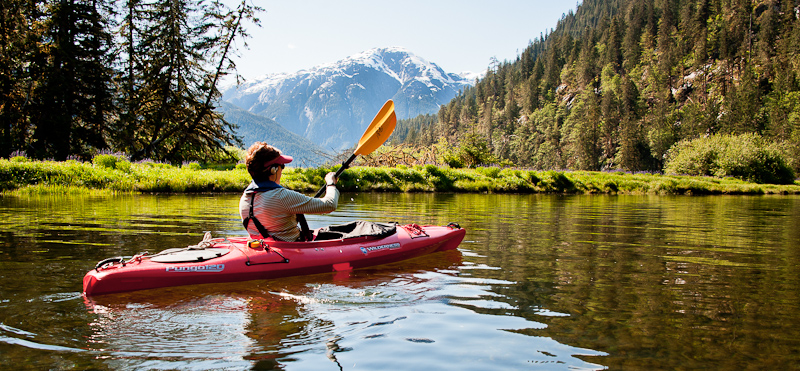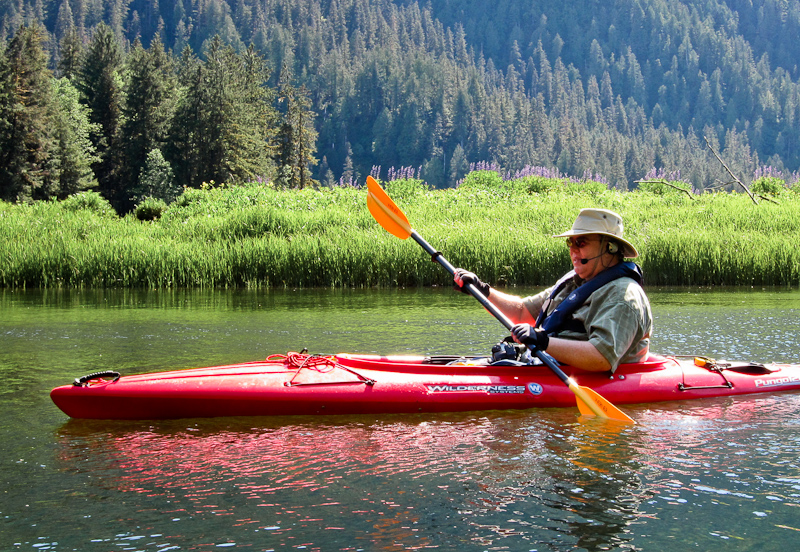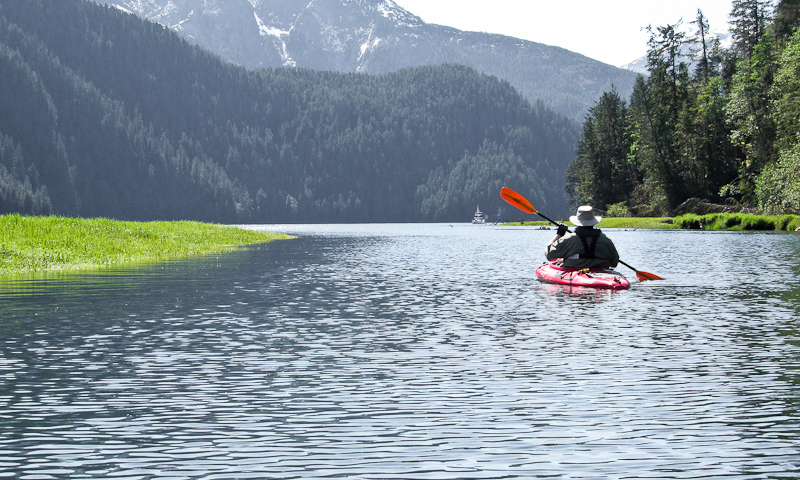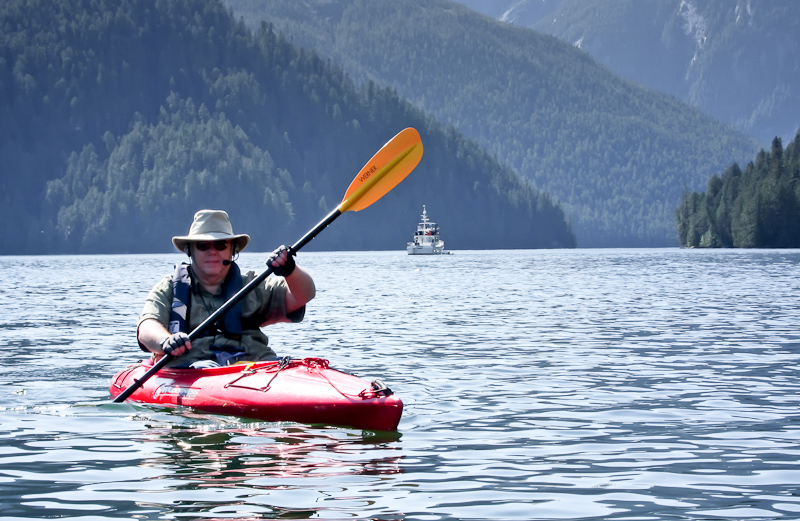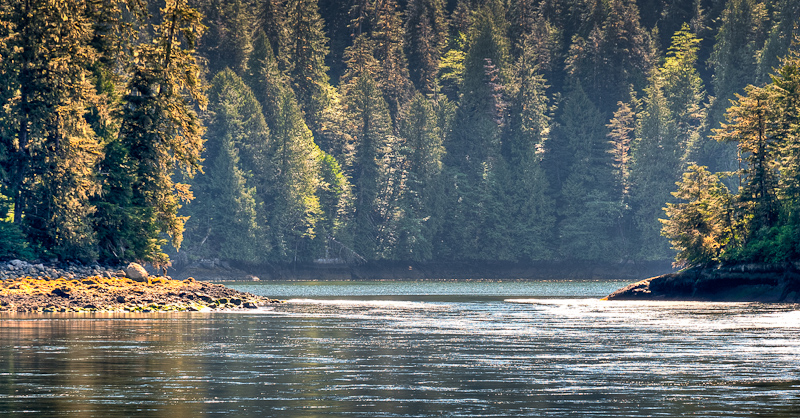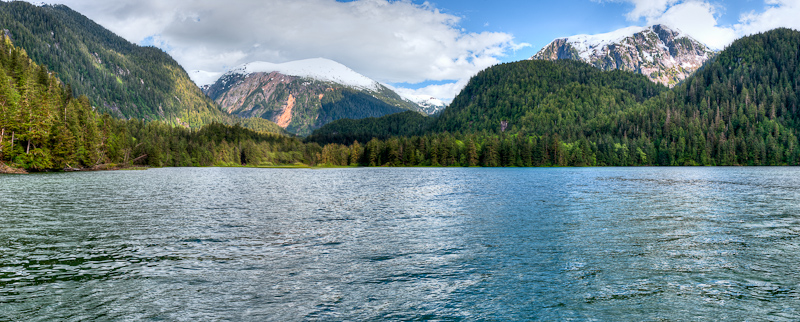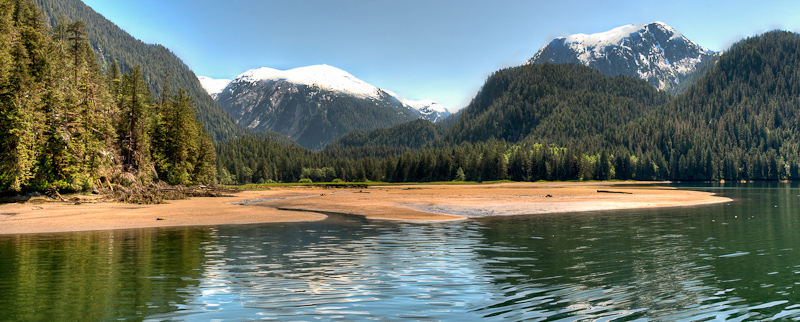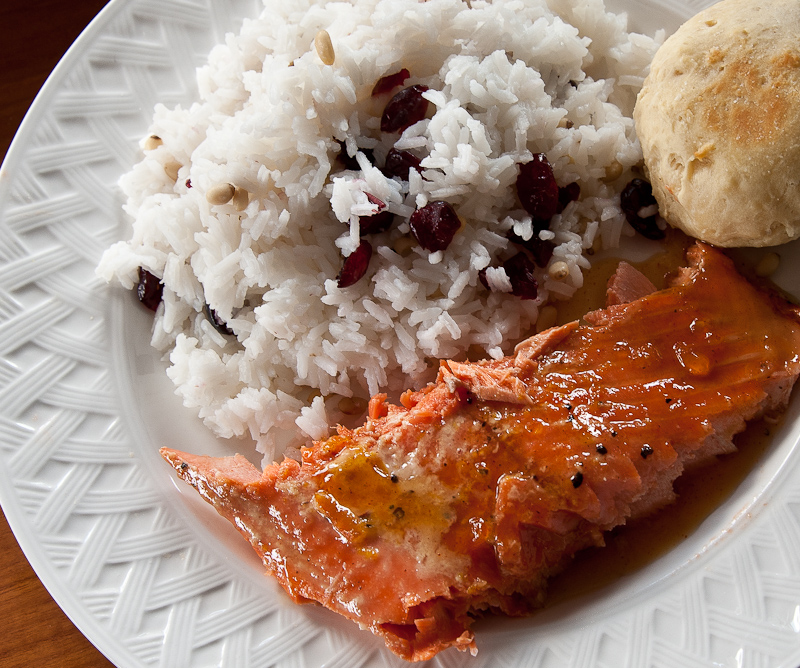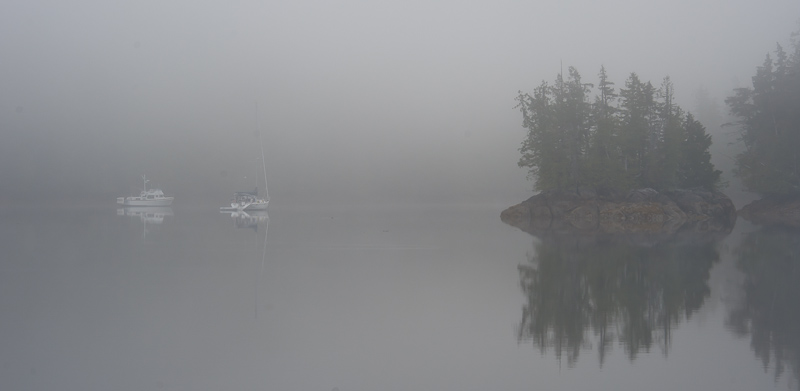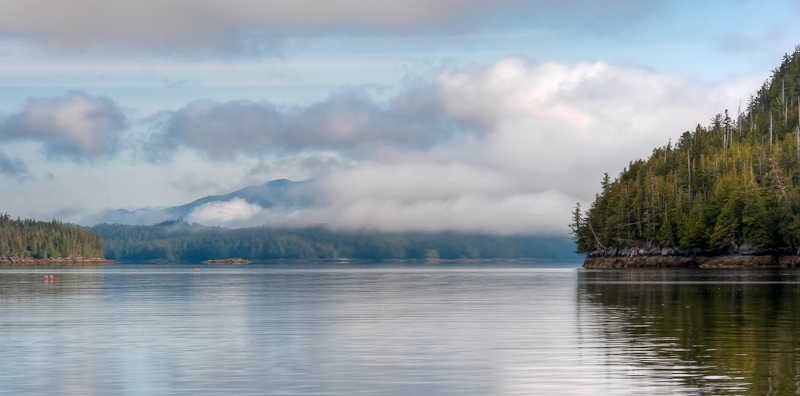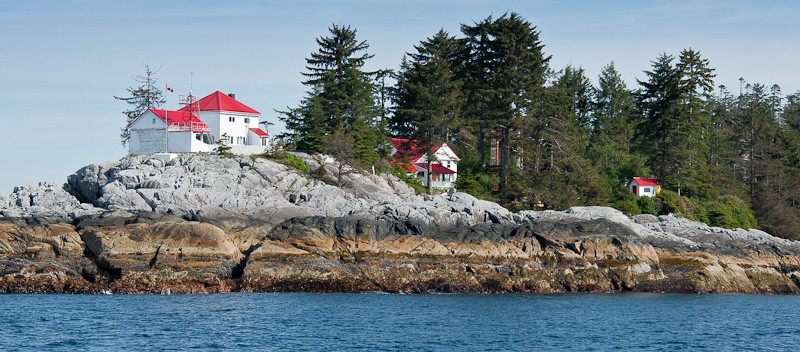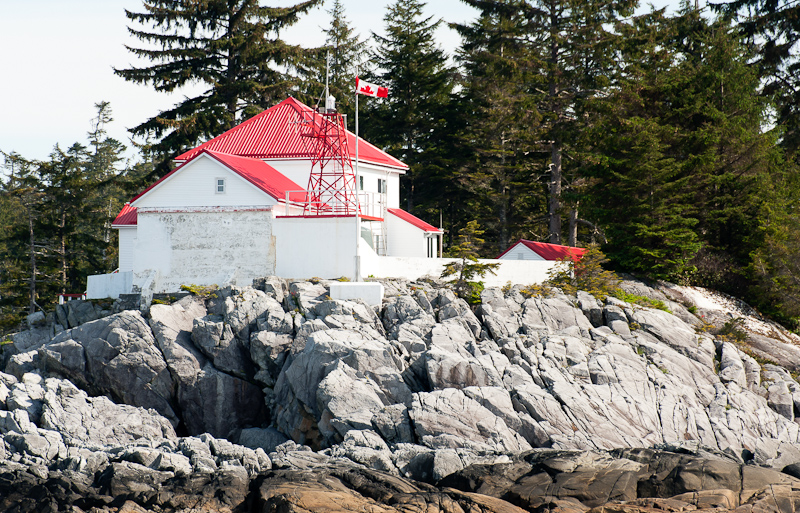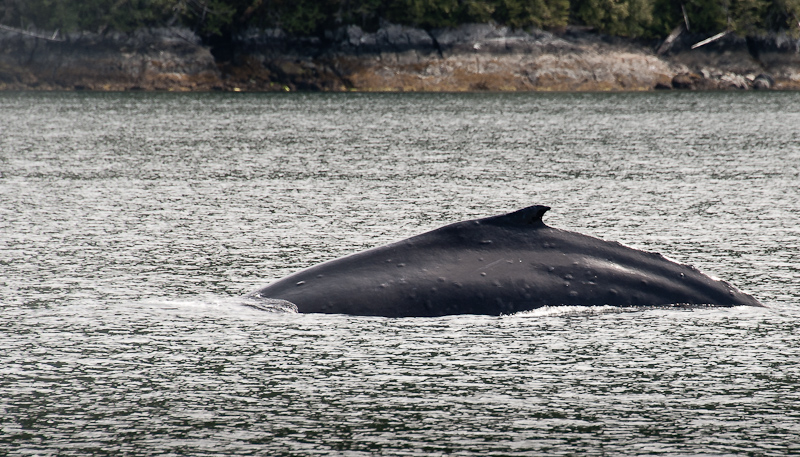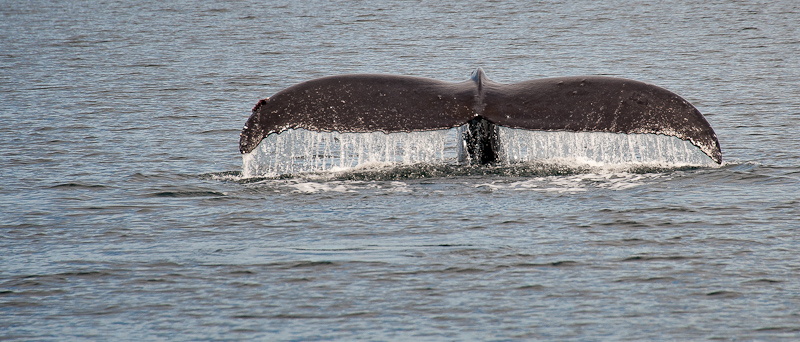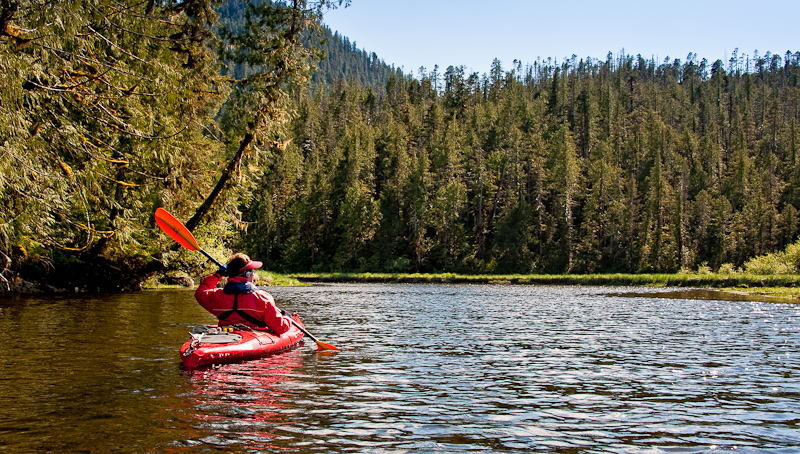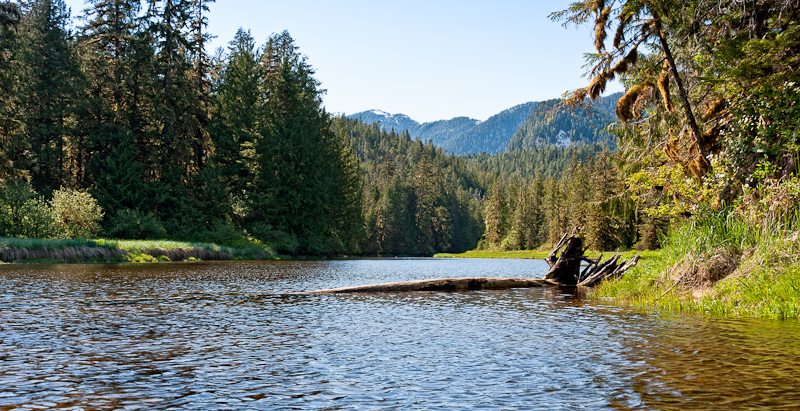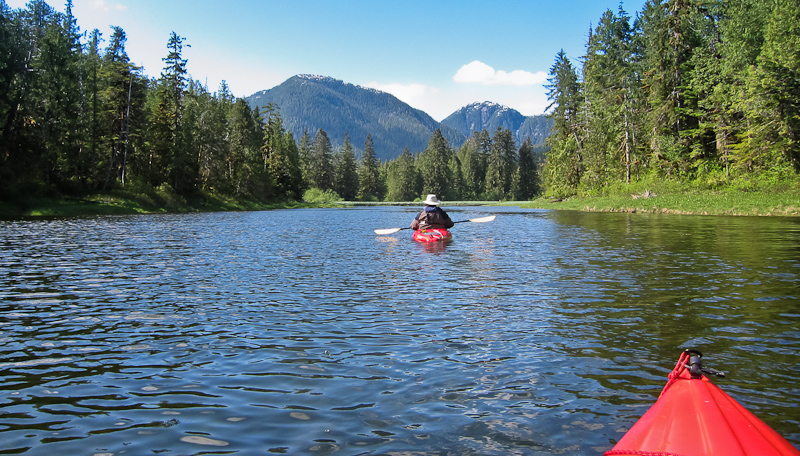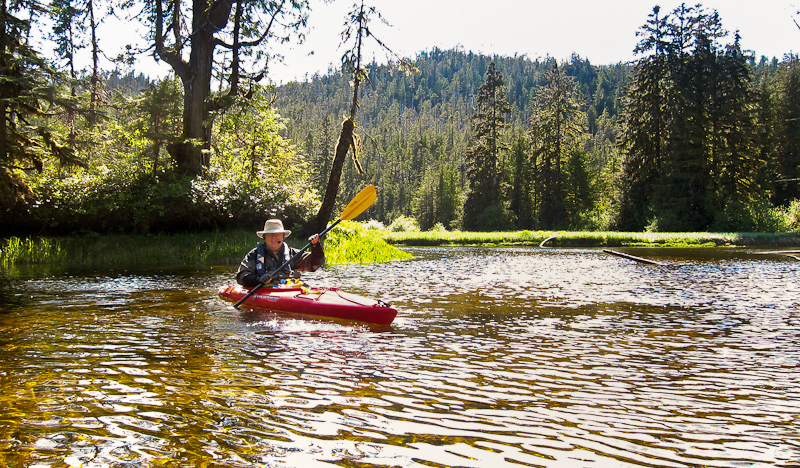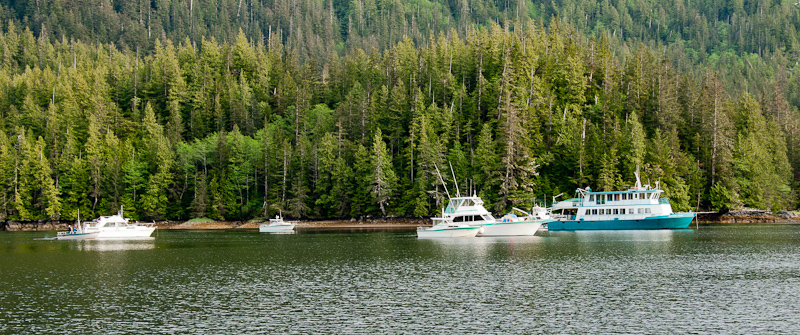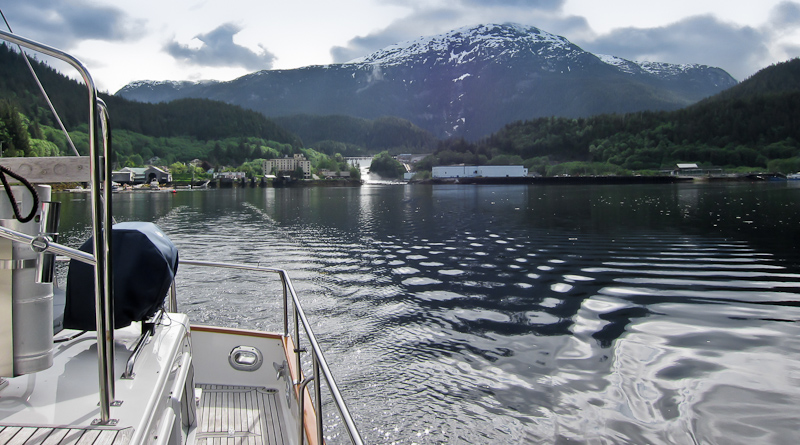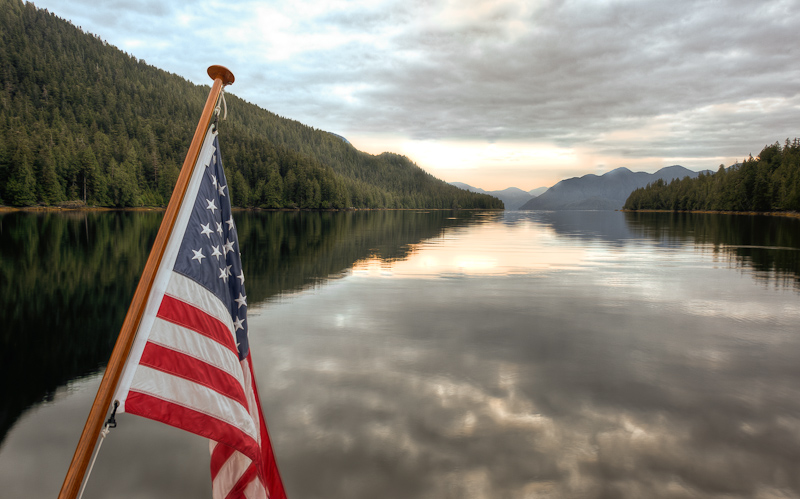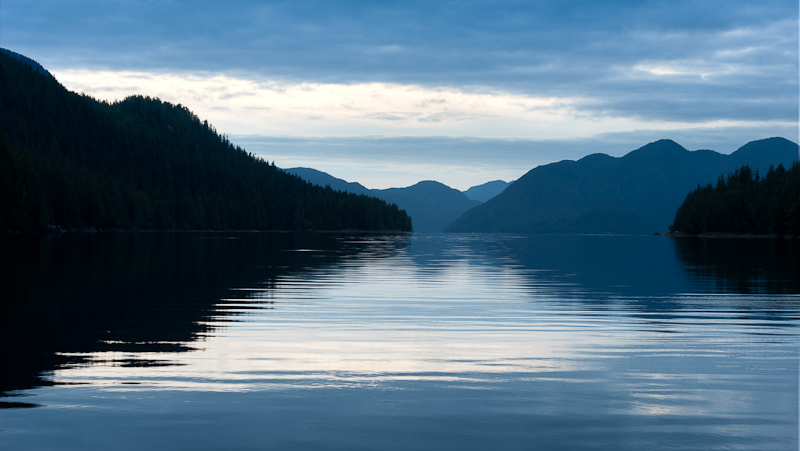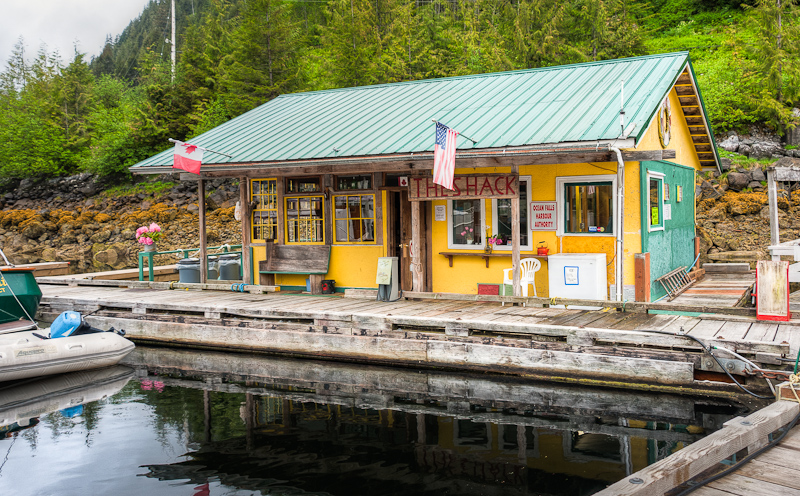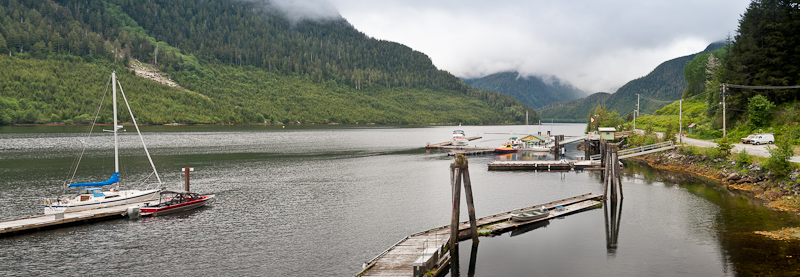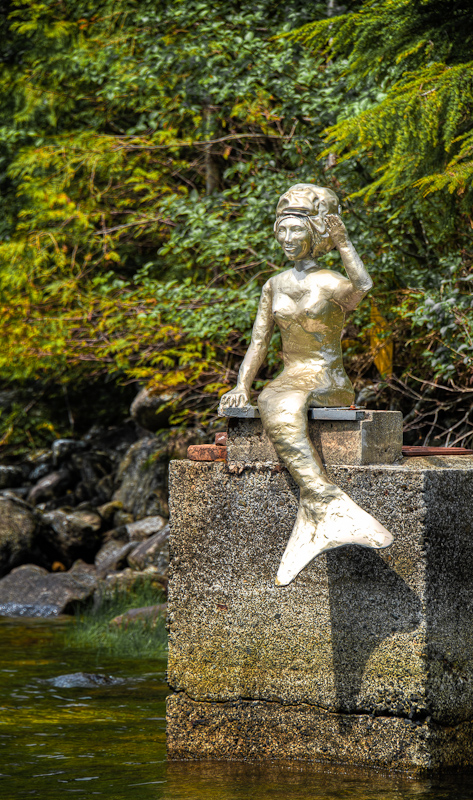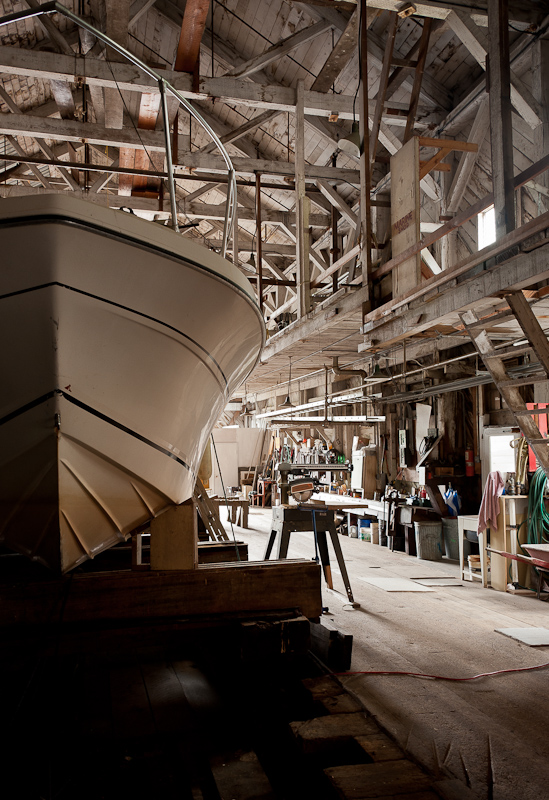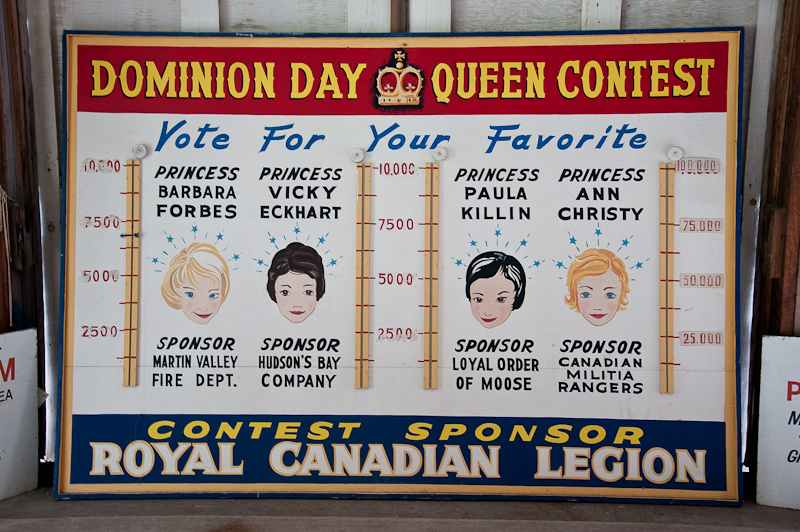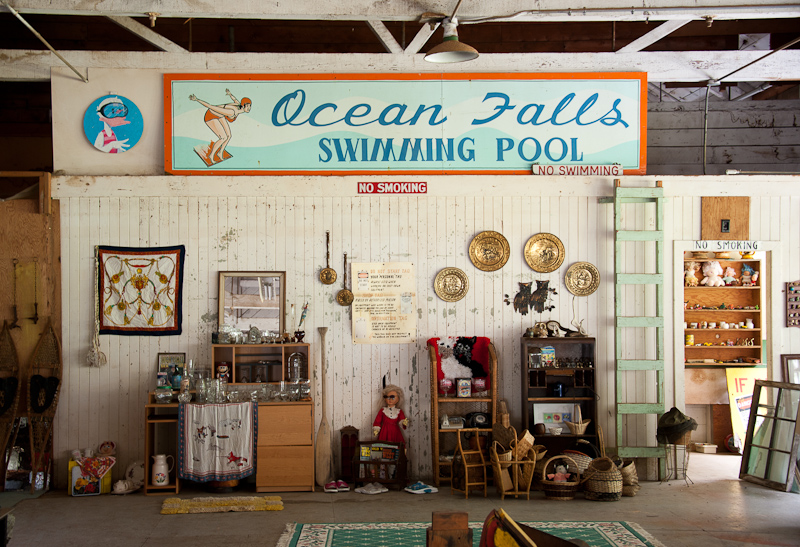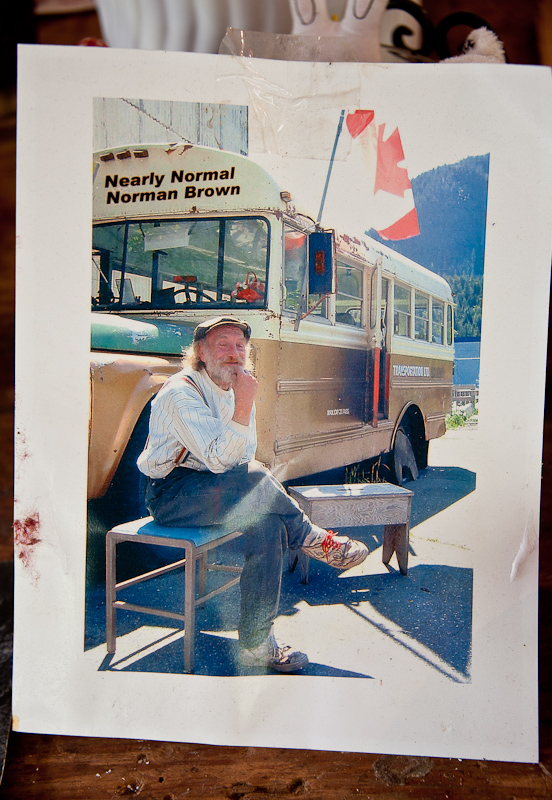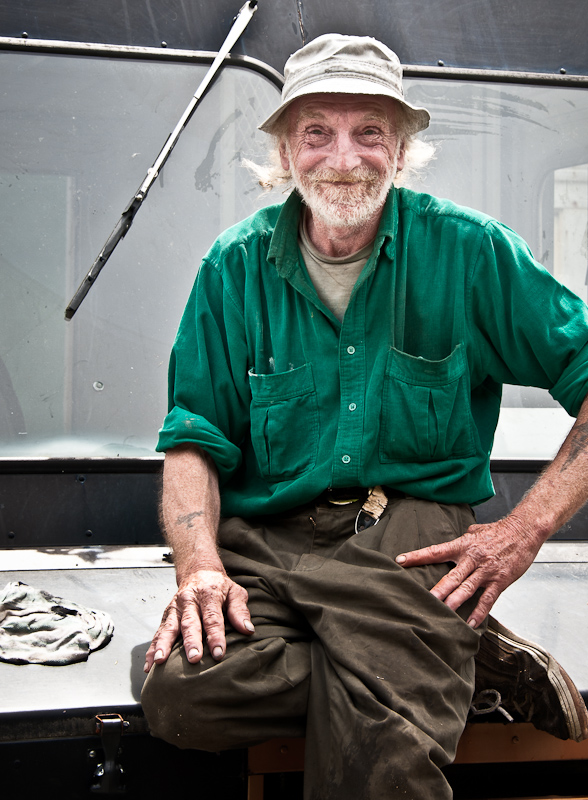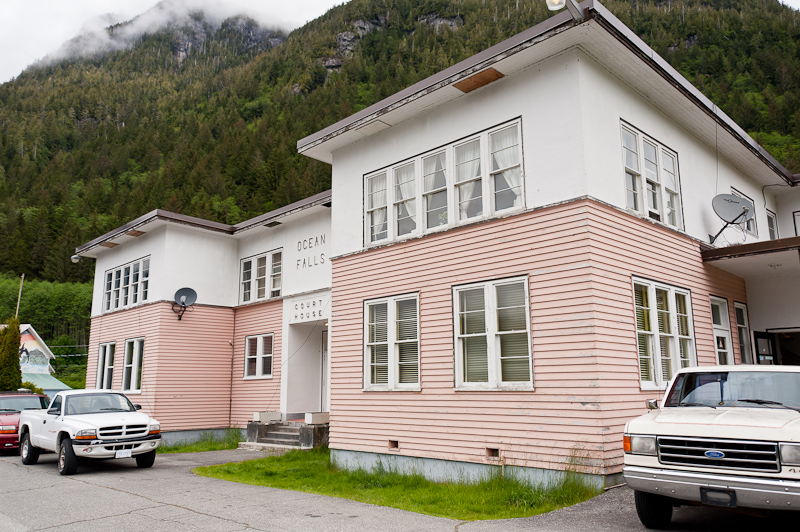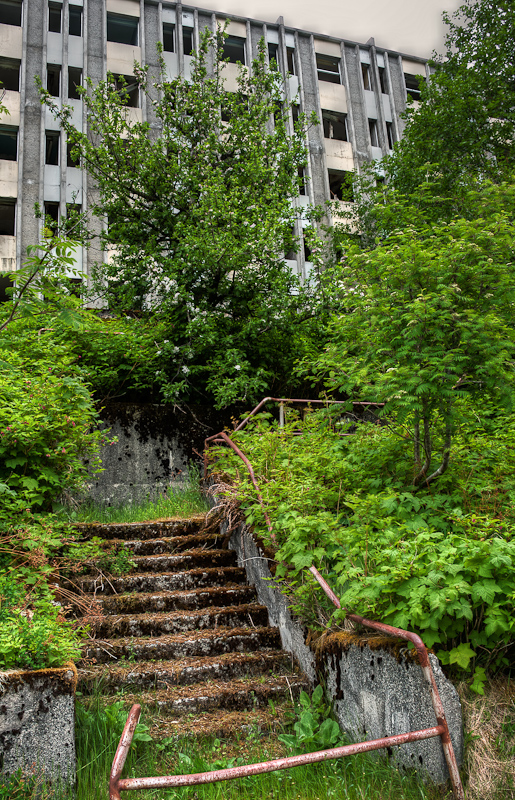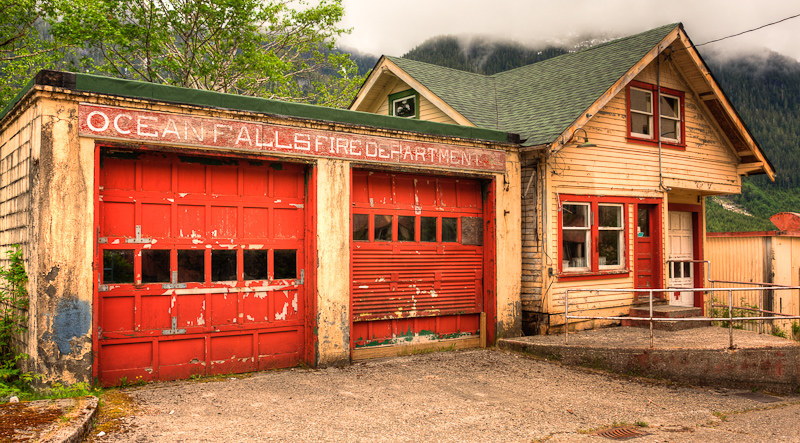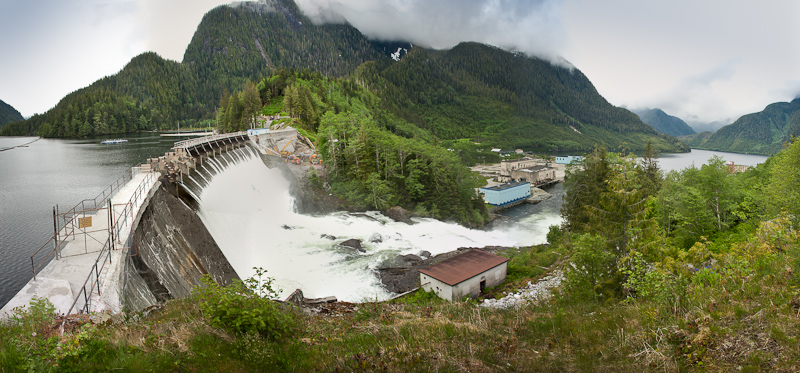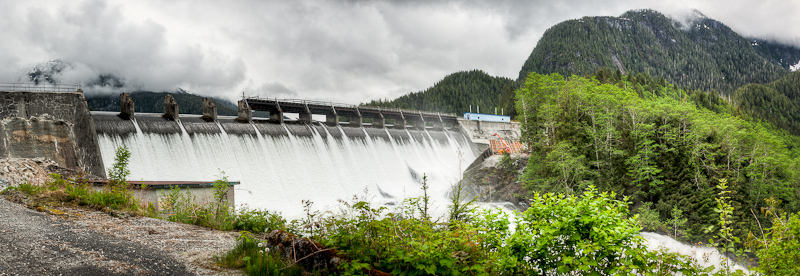We were up early again to catch a favorable current to Butedale. It was overcast and not very nice out. Bob flaked the anchor chain as I brought it up, which seems to help avoid the anchor chain jams we’d had to wrestle with earlier in the trip. Preventive medicine works wonders!
Our friends on Zucchini had told us it was worth stopping at Butedale, even though it is a falling down mess of old cannery ruins. It sounded interesting, and the caretaker was reputed to be friendly and inventive. So off we went. As we approached, you could see what used to be a thriving settlement and cannery. There is a lovely large waterfall, and then the main area with all the buildings. On first approach, it was tough to see where the right dock was, but it came clear when we saw the gangway to shore.

"Welcome" to Butedale

Butedale is a mixture of collapsed structures or soon to be collapsed structures
We were the only boat there, and as we were tying up to the docks which were sturdy but had no bull rails, just metal eye hooks. Cory the “new” caretaker came down to greet us. Cory is working as a caretaker with Lou, the longstanding Butedale caretaker, with hopes of taking over for Lou when we retires. Cory’s greeting party consisted of Burt the dog and Tiger the cat, a big orange male who was super friendly.

The dock is solid, despite your first impression. I've paid $1 a foot for a less sturdy tie
Cory took us on a great guided tour of Butedale – which was not only needed for the inside information about what we were looking at, but also to keep us safe. There is a lot of stuff that is falling down and not OSHA certified. “Enter at your own risk” signs made sense to me.
We saw the power plant, with the 2 turbines from 1939, and how they had it rigged to provide some electricity to the cookhouse where Cory and Lou live. We walked up to the “flume”, which Lou and a friend built several years ago when the old pipeline failed and water was needed to keep the power going. It is an engineering feat, that’s for sure. We then saw the two old houses that are rented out to the occasional kayaker or small boat captain, and the large warehouse that housed a makeshift bowling alley.

Cory leads the way into the power plant

The water from the lake arrives in the powerhouse and is controlled by this massive valve

All the force of the water now drives a small alternator

The handmade flume seems to spill more than it carries, but it works!
Butedale’s history was interesting, and it’s hard to believe that it was still running about 30-40 years ago. Time has certainly taken its toll. Lou and Cory do their best to hold back time, but they hope for a new owner (Butedale is for sale) to infuse the place with cash and dreams.

One of the many buildings whose fate is undeniable

We're standing at the end of the warehouse that abuts the shore. The open end is falling into the sea.

The makeshift bowling alley

“I know I put it here someplace in the warehouse”

Each day, a little more is reclaimed by Mother Nature
Cory ended the tour at the cookhouse. We met Lou, who was making and then enjoying his breakfast, and we saw lots of old pictures of Butedale before it started to decay. Apparently, when it was abandoned, the lights were left on, so it was a true ghost town. Cory said fishermen used to tie up and take showers because the boilers were left working as well – at least they worked for a while.

The cook house, home to Cory and Lou, keeps warm with 100 cords of wood a year
Lou is a character. He and Cory get their provisions from Kitimat, and they have a great story about losing the engine on Christmas Day on their way up Douglas Channel, and having to wait in 5’ seas for the Coast Guard auxiliary to rescue them, as the Coasties had to be roused from their Christmas plans to come to work!
Lou does some really cool carving art, and we bought a nice one of a killer whale. We enjoyed our time at Butedale, and think it’s definitely a worthwhile stop. Plus, it was good to stretch our legs, we were feeling a bit boat-bound!

Lou at work in his artists studio
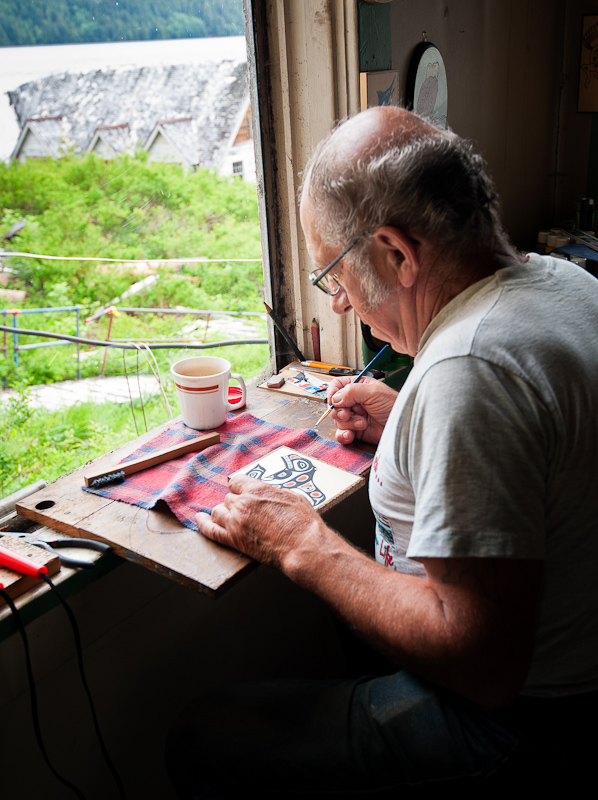
Lou is very skilled in his craft

A photo of Butedale in its prime
Back in the boat, we headed north. I worked on blog updates, while Bob helmed. After about an hour or so and following a great lunch of meatloaf sandwiches, we traded spots. Bob took a nap while I enjoyed helm duties on an overcast but calm day. Even Wright Sound was peaceful and flat as we made our way to Hawk Bay. At one point, I saw a pleasure boat go by… it was the same boat from last night’s anchorage. I was pleased to see it heading at full tilt boogie to a different destination from ours, white wake flying from the boat as it went by.

Just us and the grand Pacific Northwest
We knew Hawk Bay was just a place to sleep, and were not expecting much in the way of scenery. We were right. There was a bottom sampling barge in the bay, but it was otherwise empty and we dropped the hook and settled in about 5pm.
Dinner was curried chicken salad and Bob’s homemade drop biscuits, and an early night.


